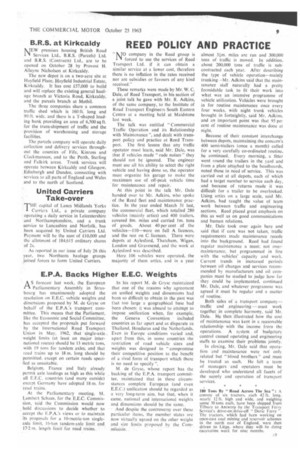E.P.A. Backs High er E.E.C. Weights
Page 11

If you've noticed an error in this article please click here to report it so we can fix it.
• A S forecast last week, the European
Parliamentary Assembly in Strasbourg has unanimously adopted the resolution on E.E.C. vehicle weights and dimensions proposed by M. de Gryse on behalf of the E.P.A.'s transport committee. This means that the Parliament, like the Economic and Social Committee, has accepted the proposals put forward by the International Road Transport Union in May, 1962, that • single-aide • weight limits (at least on major international routes) should be 13 metric tons, with 19 tons for tandem axles, and that road trains up to 18 m. long should be permitted, except on certain roads specified as unsuitable.
Belgium, France and Italy already permit axle loadings as high as this while all E.E.C. countries (and many outside) except Germany have adopted 18 m. for road trains.
At the Parliamentary meeting, M. Lambert Schaus. for the E.E.C. Commission, said the Commission would now hold discussions to decide whether to accept the E.P.A.'s views or to maintain its proposals for a 10-metric-ton singleaxle limit, 16-ton. tandem-axle limit and 17.2 m. length limit' for road (Mins. In his report M. de Gryse maintained that one of the reasons why agreement on unified weights and dimensions had been so difficult to obtain in the past was that too large a geographical base had been chosen: it was absurd to attempt to impose unification when, for example, the Geneva Convention included countries as far apart and as disparate as Thailand, Honduras and the Netherlands. Even in Europe conditions varied and, apart from this, in some countries the restriction of road vehicle sizes and weights was designed to "compromise their competitive position to the benefit of a rival form of transport which there is no need to specify ".
M. de Gryse, whose report has the backing of the E.P.A. transport committee, maintained that in these circumstances complete European (and even E.E.C.) unification should be regarded as a very long-term aim, but that, when it came, national and international weights and dimensions should be the same.
• And despite the controversy over these particular items, the member states are now virtually agreed on the other weight and size limits proposed by the Com mission. •




























































































